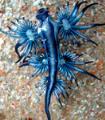
DMT-Nexus member
Posts: 90 Joined: 20-Apr-2012 Last visit: 28-Dec-2015 Location: south africa
|
Hey guys so went walking around the bush looking for plants found a Silene specie. Is it the Ubulawu (african dream root) that produces vivid dreams. I'm not 100% sure if its S.capensis? Or is it different Silene specie? Thanks any help appreciated!  hypnotoad attached the following image(s):  IMG-20131208-00439.jpg (920kb) downloaded 74 time(s). IMG-20131208-00438.jpg (927kb) downloaded 74 time(s).Explore the limits of the mind...
|
|
|
|
|

Kalt und Heiß, Schwarz und Rot, Kürper und Geist, Liebe und Chaos
 
Posts: 4661 Joined: 02-Jun-2008 Last visit: 30-Apr-2022
|
hypnotoad wrote:...a Silene specie. It is spelled specie s; same for the singular and plural forms  I wouldn't know to id it, but good luck with the id, I hope you stand lucky! Need to calculate between salts and freebases? Click here! Need to calculate freebase or salt percentage at a given pH? Click here!
|
|
|

xͭ͆͝͏̮͔̜t̟̬̦̣̟͉͈̞̝ͣͫ͞,̡̼̭̘̙̜ͧ̆̀̔ͮ́ͯͯt̢̘̬͓͕̬́ͪ̽́s̢̜̠̬̘͖̠͕ͫ͗̾͋͒̃͛̚͞ͅ
Posts: 1716 Joined: 23-Apr-2012 Last visit: 23-Jan-2017
|
Flora Zambesiaca could give you a hint: Quote:The writing of Flora Zambesiaca was started in 1960 as a joint project involving the collaboration of the Governments of the Federation of Rhodesia (now Zambia and Zimbabwe), Nyasaland (now Malawi), Portugal and the United Kingdom, as well as the following institutions: Natural and History Museum, London; Royal Botanic Gardens, Kew; Centro de Botânica, Junta de Investigações do Ultramar, Lisbon; Government Herbarium, Salisbury, Federation of Rhodesia and Nyasaland. Its main objective is the taxonomic study of native and naturalised plants of the Zambezi River basin, covering the territories of Botswana, Malawi, Mozambique, Zambia, Zimbabwe and the Caprivi Strip.
Edit: Alright, there are even more Silene plants which grow in SA http://redlist.sanbi.org/genus.php?genus=3952Why not ask a local expert?
|
|
|

DMT-Nexus member
Posts: 90 Joined: 20-Apr-2012 Last visit: 28-Dec-2015 Location: south africa
|
Sorry my English is not the best. Wow never knew there were so many Silene species! I'm busy looking through the list now. Does only capensis (now undulata I think) have the vivid dream inducing properties or do other Silene species aswell? What alkaloids (if the do contain alkaloid's)? Explore the limits of the mind...
|
|
|

DMT-Nexus member

Posts: 1711 Joined: 03-Oct-2011 Last visit: 20-Apr-2021
|
It's difficult to ID accurately the species with the pictures, but it does look like Silene. There's reports claiming that other Silene species, also found often in the northern hemisphere (specifically Silene Latifolia, and most likely Silene Alba) show very similar properties to the known Silene Capensis/Undulata. And just a note about active compounds... it is not clear whether the oneirogenic properties of Silene are due to alkaloids. Traditional ubulawu usage and available information suggest the triterpenoid saponins found in the roots may be the actives instead. "The Menu is Not The Meal." - Alan Watts
|
|
|

Boundary condition

Posts: 8617 Joined: 30-Aug-2008 Last visit: 24-Dec-2025 Location: square root of minus one
|
So, trawling back over the old threads, this catches my eye. S. alba certainly occurs in my region and I've often wondered about it in this respect. As far as the Caryophyllaceae as whole goes, I'll add the note that the fairly closely-related Arenaria kansuensis is listed (in TiHKAL) as a harmine-containing plant. So that sort of brings alkaloids back into the equation. “There is a way of manipulating matter and energy so as to produce what modern scientists call 'a field of force'. The field acts on the observer and puts him in a privileged position vis-à-vis the universe. From this position he has access to the realities which are ordinarily hidden from us by time and space, matter and energy. This is what we call the Great Work." ― Jacques Bergier, quoting Fulcanelli
|